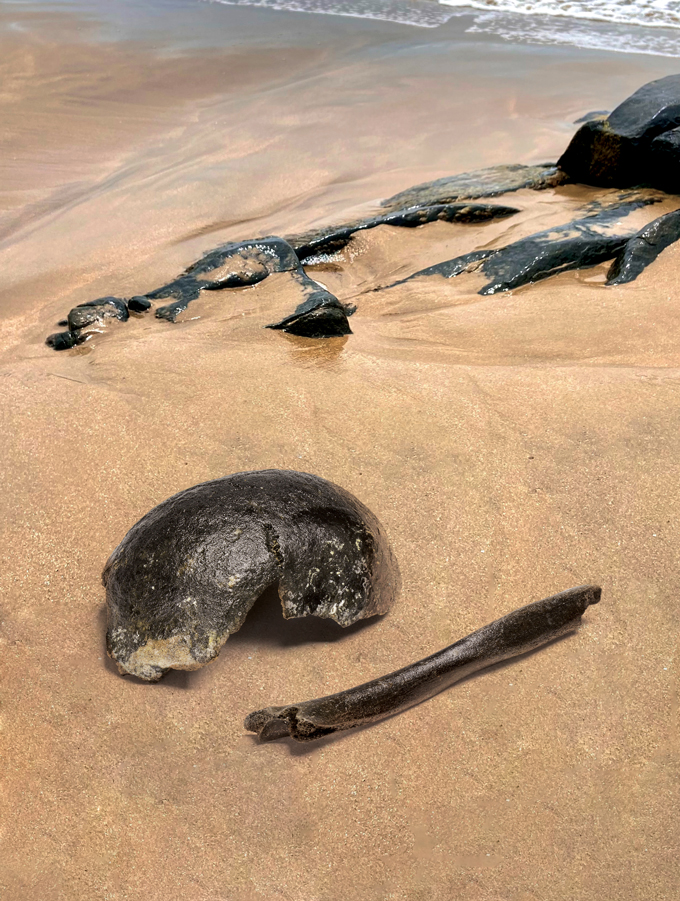Ice sheets expanded across much of northern Europe from around 25,000 to 19,000 years ago, making a huge expanse of land unlivable. That harsh event set in motion a previously unrecognized tale of two human populations that played out at opposite ends of the continent.
Western European hunter-gatherers outlasted the icy blast in the past. Easterners got replaced by migrations of newcomers.
That’s the implication of the largest study to date of ancient Europeans’ DNA, covering a period before, during and after what’s known as the Last Glacial Maximum, paleogeneticist Cosimo Posth and colleagues report March 1 in Nature.
Science News headlines, in your inbox
Headlines and summaries of the latest Science News articles, delivered to your email inbox every Thursday.
Thank you for signing up!
There was a problem signing you up.
As researchers have long thought, southwestern Europe provided refuge from the last Ice Age’s big chill for hunter-gatherers based in and near that region, the scientists say. But it turns out that southeastern Europe, where Italy is now located, did not offer lasting respite from the cold for nearby groups, as previously assumed.
Instead, those people were replaced by genetically distinct hunter-gatherers who presumably had lived just to the east along the Balkan Peninsula. Those people, who carried ancestry from parts of southwestern Asia, began trekking into what’s now northern Italy by about 17,000 years ago, as the Ice Age began to wane.
“If local [Ice Age] populations in Italy did not survive and were replaced by groups from the Balkans, this completely changes our interpretation of the archaeological record,” says Posth, of the University of Tübingen in Germany.
Posth and colleagues’ conclusions rest on analyses of DNA from 356 ancient hunter-gatherers, including new molecular evidence for 116 individuals from 14 countries in Europe and Asia. Excavated human remains that yielded DNA dated to between about 45,000 and 5,000 years ago (SN: 4/7/21).
Comparisons of sets of gene variants inherited by these hunter-gatherers from common ancestors enabled the researchers to reconstruct population movements and replacements that shaped ancient Europeans’ genetic makeup. For the first time, ancient DNA evidence included individuals from what’s known as the Gravettian culture, which dates from about 33,000 to 26,000 years ago in central and southern Europe, and from southwestern Europe’s Solutrean culture, which dates to between about 24,000 and 19,000 years ago.
Contrary to expectations, makers of Gravettian tools came from two genetically distinct groups that populated western and eastern Europe for roughly 10,000 years before the Ice Age reached its peak, Posth says. Researchers have traditionally regarded Gravettian implements as products of a biologically uniform population that occupied much of Europe.
“What we previously thought was one genetic ancestry in Europe turned out to be two,” says paleogeneticist Mateja Hajdinjak of the Max Planck Institute for Evolutionary Anthropology in Leipzig, Germany, who did not participate in the new study. And “it seems that western and southwestern Europe served as a [refuge from glaciation] more than southeastern Europe and Italy.”
Descendants of the western Gravettian population, who are associated with Solutrean artifacts and remnants of another ancient culture in western Europe that ran from about 19,000 to 14,000 years ago, outlasted the Ice Age before spreading northeastward across Europe, the researchers say.
Further support for southwestern Europe as an Ice Age refuge comes from DNA extracted from a pair of fossil teeth that belonged to an individual linked to the Solutrean culture in southern Spain. That roughly 23,000-year-old adult was genetically similar to western European hunter-gatherers who lived before and after the Last Glacial Maximum, Max Planck paleogeneticist Vanessa Villalba-Mouco and colleagues, including Posth, report March 1 in Nature Ecology & Evolution.
Meanwhile, the genetic evidence suggests that hunter-gatherers in what’s now Italy were replaced by people from farther east, probably based in the Balkan region. Those newcomers must have brought with them a distinctive brand of stone artifacts, previously excavated at Italian sites and elsewhere in eastern Europe, known as Epigravettian tools, Posth says. Many archaeologists have suspected that Epigravettian items were products of hunter-gatherers who clustered in Italy during the Ice Age’s peak freeze.
But, Hajdinjak says, analyses of DNA from fossils of Ice Age Balkan people are needed to clarify what groups moved through Italy, and when those migrations occurred.
Ultimately, descendants of Ice Age migrants into Italy reached southern Italy and then western Europe by around 14,000 years ago, Posth and colleagues say. Ancient DNA evidence indicates that, during those travels, they left a major genetic mark on hunter-gatherers across Europe.


